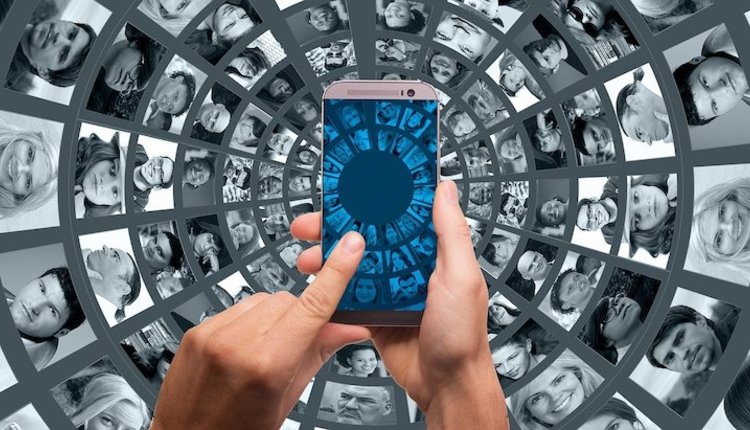
Decreasing attention spans. Digital fatigue. Content overload. How effectively are you communicating with your customers?
The disruption of the last two years has sparked lasting changes in the expectations customers have for interacting with a business. According to research, 84% of people in the US say they expect companies to send them reminders and 90% say they are more likely to do business with companies that do.
At the same time, customers are expecting seamless, personal, omnichannel journeys from every brand they interact with. Research suggests a personalized digital experience can make or break a sale: 44% of respondents said they will try to only interact with businesses that offer an excellent experience online and 28% said they won’t use a brand at all if the experience isn’t excellent. For 72% of respondents, having an excellent digital customer experience is a key factor in their purchasing decision.
Modern problems call for smart solutions. Notifications are automated and send personalized messages to customers over a variety of digital channels. As mobile devices become deeply embedded in daily life, it’s clear that marketing professionals must adapt their tools for reaching customers wherever they are. Here are three smart ways marketers can boost engagement and build relationships in a digital age:
1. Reach customers with personalized email notifications
Email is the king of customer communications: 54% of businesses named it as a top revenue driver and 36% plan to boost email engagement over the next 12 months. The global email market is projected to grow to $17.9 billion by 2027 according to Statista. The best email communications deliver the right content to your customers at the right time.
Marketers can easily personalize email messages at scale to contain relevant content based on past preferences or interactions to reach customers at key moments. This could look like cross-promotion based on past purchases, a tailored message to drive repeat business or an automated account-setup communication based on an event-driven journey.
2. Start two-way conversations with SMS notifications
As email inboxes grow more crowded, SMS notifications are an increasingly effective way to reach customers. They complement email marketing and can be used for transactional messaging, reminders or to start two-way conversations. Half of U.S. adults check their mobile phone within five minutes of waking up and on average, Americans check their phones 344 times a day — once every four minutes.
According to U.S. consumers, the three most appreciated message types from businesses include appointment reminders, booking confirmations, changes or cancellations and shipping/delivery updates.
People often check their texts almost immediately after receiving them, so this method is best suited to more urgent messages. It shares space with family and friends in a more personal area of a customers’ mobile device. A downside is that consumers can be less willing to provide their phone number than their email to a business, so it can take time to build and grow this channel. It’s best to use SMS notifications judiciously since over-sending could encourage a higher opt-out rate.
3. Engage customers with push notifications
Push notifications are brief, one-way messages that come from a mobile app to encourage consumers to engage with it. The popularity of brand-specific phone apps and the minimal cost impact of these communications to the consumer continue to drive their growth. In 2021, consumers downloaded 230 billion mobile apps to their connected devices — up by more than 63% from 2016 according to Statista.
Shorter is better when it comes to push notifications: messages with 10 or fewer words had an 8.8% clickthrough rate, compared to 4.9% for 11-20 words and 3.2% for 21+ words. Marketers can send push notifications to both iOS and Android devices. Push notifications have the power to drive repeat purchases, re-engage lapsed users and guide conversions.
No matter how you choose to engage — email, SMS, push notifications or all three — notifications allow you to connect with customers in many valuable ways, including:
Transactional: These messages alert users to the status of a recent payment, an upcoming appointment, a billing confirmation or other transaction. For example, an insurance company may need customers to upload documents or images to complete a claim and use a push notification to direct them to a landing page to do so.
Promotional: Brands can use promotional notifications to let customers know about exclusive offers, flash sales or other discounts.
Educational: Brands can use notifications to help users learn about a new concept, course, or topic.
Lifecycle: Brands can send personalized notifications to keep customers engaged at their specific stage of the buying journey. This could include cross-sell or partner opportunities or could be a targeted offer to customers who haven’t engaged with the app recently.
Asking for feedback: Brands can send this notification to prompt customers to review their app or provide feedback on a recent transaction or experience.
The last few years have been the ultimate use case for empathy-driven communications. Brands need to earn trust while cultivating loyalty. An integrated approach to marketing and communications with an eye to mobile-first delivery and a focus on first-party data can help brands win hearts and minds in a crowded landscape.
Randy Sparks is the Director of Product Management for OpenText’s Customer Communication Management (CCM) offerings. He is a graduate of The College of Charleston and holds a degree in Computer Science. During his 25-year career in the software industry, he has held roles in R&D, Product Management, Services, Marketing, Strategy and Sales. In his current role, he is responsible for OpenText’s CCM product portfolio which includes Exstream, StreamServe and xPression. He resides in Lexington, KY and spends his spare time looking for the next beach to visit.














